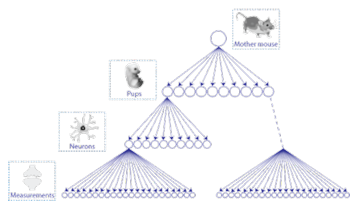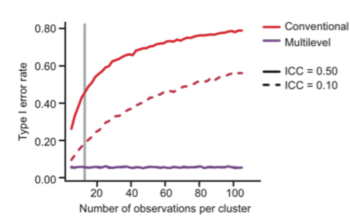
Aarts et al. propose using multilevel analysis as a solution to dependency between observations often seen in biological neuroscience data.
A solution to dependency: using multilevel analysis to accommodate nested data.
For paper click here
Recently, concerns have been raised on an excess of false positive results contaminating the neuroscience literature. We speak of false positives when statistical tests pick up effects that are actually absent in reality (i.e., false finding, or “false alarm”). Reported causes for excesses of false positives that have been put forward are, among others, underpowered studies (Button et al) and choice of statistical methods (Nieuwenhuis et al.). Controlling the false positive rate is critical, since theoretical progress in the neuroscience field relies fundamentally on drawing correct conclusions from experimental research. Aarts and colleagues focus on another, often neglected, possible cause false positive results: neuroscience data often show dependency (i.e., “nesting‚) and failure to accommodate this dependency causes an excess of false positive results.


So why is the use of multilevel analysis better than using conventional statistical methods? “Multilevel analysis explicitly integrates in the statistical model the fact that multiple observations come from the same research object. As such, dependency between observations is accommodated in multilevel models and the Type I error rate is retained at the nominal level expressed by α‚, Emmeke explains. “Important to note for neuroscientists doing experimental research in nested designs is that the statistical power to detect an experimental effect hardly increases when one collects more observations per research object (e.g., more observations per cell): the power increases much more when one invests time and money in collecting data on more researcher objects (i.e., more unrelated cells)”, she adds.